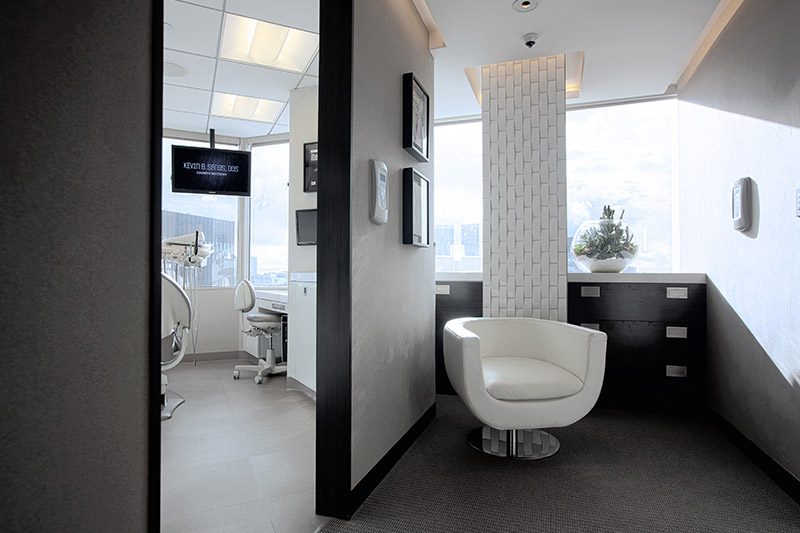Many patients become anxious or fearful when visiting or even thinking about the dentist. Dental work is often uncomfortable; sitting with your mouth open wide as a dentist pokes around with tools and mirrors is far from an enjoyable experience. Combine that with the sound of the drill and the underlying knowledge that something in your mouth isn’t right, and you are naturally left with tense nerves, stress, and fear.
Dentists understand this anxiety but, even though you may be scared, try to remember that dentistry fixes your dental issues to avoid further problems down the line. Preventative oral hygiene care is the best method to help prevent cavities and more severe dental work.
Dr. Sands and his team work together to provide a comfortable, safe dental procedure in a relaxed atmosphere. Sedation dentistry is offered for patients with a sensitive gag reflex, a child or person with special needs, and patients with anxiety or who lack the time needed for multiple dentist visits or more extensive procedures.

Ease Your Fears With Sedation Dentistry
One of the most difficult parts of dental work is that you are aware of what is happening; you can see and hear everything. For most people, this causes stress and anxiety. Instead of putting yourself through this, and using it as an excuse to avoid the dentist, consider combining your dental work with sedation.
Sedation provides additional comfort and safety by easing your anxiety. There are several levels of sedation available to make you physically comfortable and to ease your mind. While some patients find that light sedation, such as the kind provided by inhaled or oral sedation, is enough, others may find that general anesthesia, where you are entirely asleep, is best.
No matter what stage of sedation you would prefer, it’s important that you find what you need to make you feel comfortable. During your initial consultation for a dental procedure, Dr. Sands will help determine if sedation dentistry is right for you.
What Are the Benefits of Sedation Dentistry?
When patients opt for sedation during their dental visit, they can:
- Avoid the fear of needles or potential pain
- Feel comfortable instead of anxious during their treatment
- Have no memory of the procedure
- Keep special needs patients relaxed
- Muffle the sound of drilling or scraping
- Prevent the triggering of a sensitive gag reflex
- Save time with fewer visits for extensive procedures
How Does Sedation Dentistry Work?
Various options for either light or mild sedation or complete sedation are available to keep you comfortable during your treatment. Dr. Sands will ensure your needs are safely and efficiently met and that all your questions are answered before your procedure.
What Is Sedation?
Sedation keeps patients comfortable and relaxed during their procedure with the help of various medications. You can choose to be either completely asleep or awake while calm and mellow during your treatment.
What Type of Anesthesia Is Used?
Oral or intravenous (IV) medications, or nitrous oxide (laughing gas), can keep you relaxed, yet responsive, during your dental treatment. If you need deeper sedation, general anesthesia will put you to sleep completely so you have no recollection of the procedure.
How Is Sedation Administered?
Light sedation is administered with a pill that helps you relax. Laughing gas has the same effect and is inhaled through a breathing mask.
If deeper sedation or general anesthesia is desired, medication is administered through an IV under the supervision of an anesthesiologist. With all sedation methods, local anesthesia is applied to numb the area.
How Should I Prepare for Sedation?
You should arrange to have someone drive you to and from your appointment and spend two to four hours with you after your procedure to help you with anything you may need until the effects of the anesthesia wear off.
Sedation vs. Sleep Dentistry
Many often mistake sedation dentistry with sleep dentistry. Usually, sleep dentistry requires the assistance of a trained anesthesiologist to administer general anesthesia intravenously (IV). The patient would be completely unconscious and require a longer stay at the facility until the trained professional determines that he or she is ready to leave.
However, with sedation dentistry, you will simply feel relaxed throughout the entire process. This will allow you to be responsive to any given cues or requests made during your treatment. Once the procedure is done, most patients are able to leave immediately.
Dr. Sands creates a personalized treatment plan and can recommend the best options to meet your needs. If you would like to achieve the dazzling smile you desire without feeling stressed or having to make multiple visits to the dentist, then we invite you to call our office and ask about sedation dentistry options. You can also view some of our patients’ before and after photos in our online photo gallery.
For more information about the types of sedation that Dr. Sands offers, contact his office by calling (310) 273-0111 to set up a consultation. You can also contact us online through our contact form.